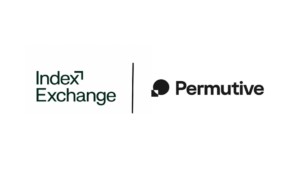By Andrew Hally, CMO at Bynder
After two decades of relentless progress, personalisation reigns supreme at the top of digital advertisers’ wish lists. Marketers were starstruck by the wealth of data that digitisation created, enabling them to finally prove returns on investment.
But, personalisation has reached its peak. Investments in data-driven targeting have leapfrogged over creativity and storytelling, resulting in declining returns. Such efforts have got marketers entrenched in the personalisation weeds, relying solely on data and losing the heart of content – creativity.
It’s easy for marketers and advertisers to get consumed by combing through highly segmented data for targeting that they turn a blind eye to alternative ways in which they can engage consumers. This got us thinking: how can they get out of the personalisation rut many marketers are stuck in? And what do they need to consider when rebalancing personalisation with creativity?
Pass the microtargeting baton
As targeting becomes more niche, it becomes harder to find enough targets for each deeply personalised ad, shrinking the returns on investment in deeper personalisation as it gets more granular. What’s more, costs increase even as returns decrease, as creating more micro-targeted ads requires more creative and copy.
Facebook and Google have tightened their chokehold on digital advertising, so all but the largest advertisers will see more success if they leave targeting up to the digital ad duopoly. With the ability and capacity to collect more data and employ more sophisticated machine learning than your average digital marketer, they can execute successful microtargeting without placing the burden of personalisation on marketing and advertising teams. The result: more time to focus on high-value initiatives, like creating interesting narrative ads that appeal to a wider demographic.
Rely less on consumer data
A growing number of consumers find personalised ads “creepy”. Hawaiian shirts do that for me. I bought one online three years ago and ads for them have haunted me ever since. Worst still are ‘surveillance ads’; ones that appear before searching for them, sparking suspicion that Siri or Alexa overheard you and passed your information along to advertisers. These ads pop up because major advertising platforms target household data. They can turn consumers off and drive them to call out egregious examples on social media.
New regulations, like GDPR and CCPA, further highlight consumer pushback. These laws make it increasingly difficult to collect and store consumer data. If the amount of data is declining, marketers and advertisers won’t be able to access incredibly granular information anymore. Similarly, Google has ended support for third-party cookies, meaning ad tech providers will be getting even less information.
The data that once allowed advertisers to make more informed, creative choices has transformed into a desire to use all of that data, all the time. Marketers need to rely less on it, especially if they want to comply with regulations and maintain consumer trust.
Rediscover creativity
Nielsen says that 47% of ad effectiveness comes from creativity. While we can still appreciate how data has allowed ads to reach a more relevant audience and prove return on investment, we need to rediscover the creativity that makes up half of successful digital ads.
If marketers and advertisers strike a better balance between targeting and creativity, they can get back to the basics of storytelling and create truly compelling ads. The ads that you remember aren’t likely to be micro-targeted ads that popped up on your Instagram feed. The ones that are more likely to stand out are those that place a greater emphasis on storytelling. Developing a story alongside an ad also taps into humans’ natural curiosity, compelling them to watch it all the way through for no other reason than to figure out what’s happening.
This can become time-consuming, so to ensure content is still able to get to market quickly, yet be scaled and personalised where necessary, creatives will need to streamline or automate their design processes. This is where creative automation can help – in fact, 32% of marketers think that automation is best used for creating content more efficiently and quickly. Introducing automation to produce different variations of digital content not only frees up time for coming up with fun and interesting concepts, but makes testing these variants much easier. It emphasises the impact that putting in extra creative effort can have.
Personalisation should no longer serve as the be-all-end-all of advertising. It’s time for marketers to step back from a solely data-driven approach and rebalance their efforts with creativity to truly get out of the personalisation rut.












